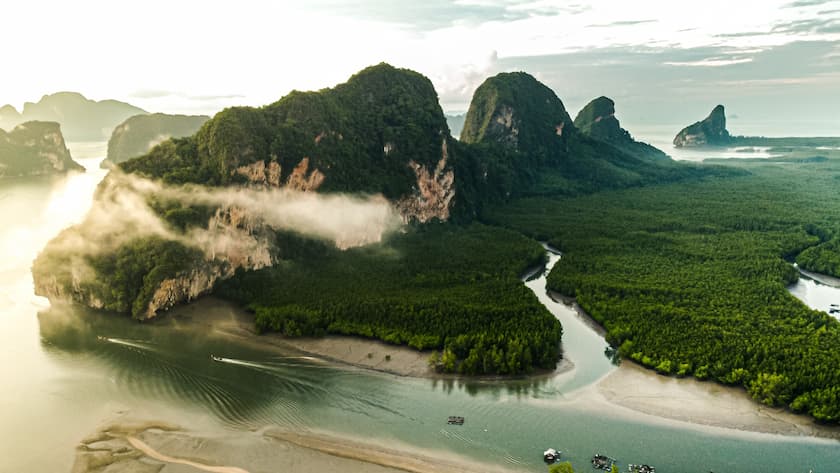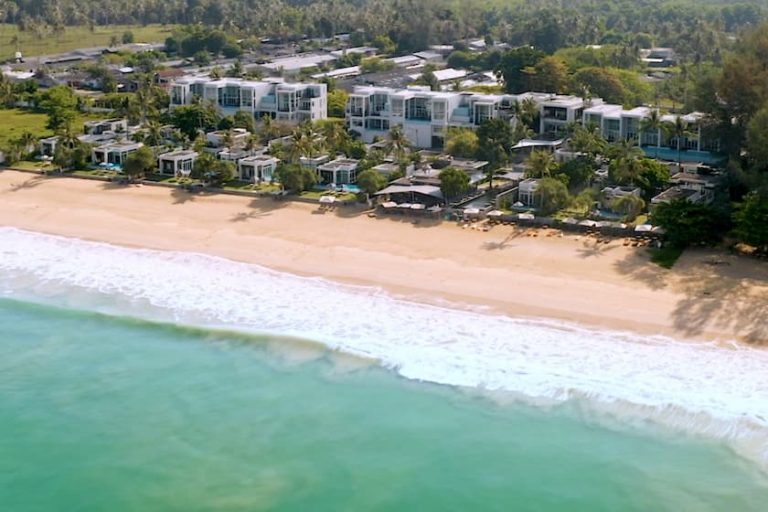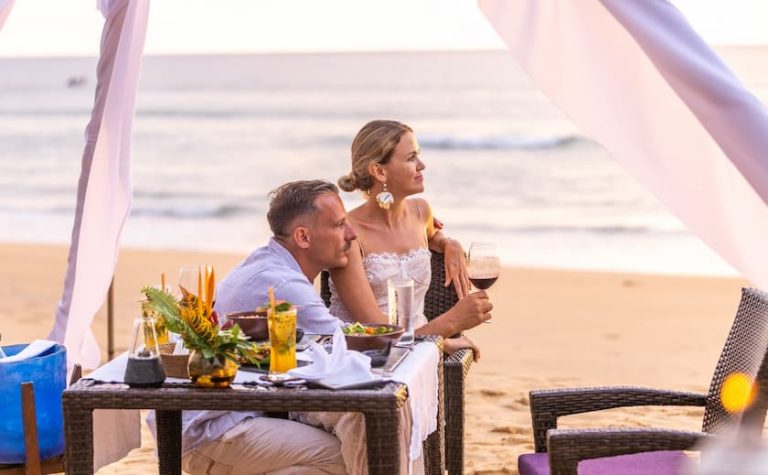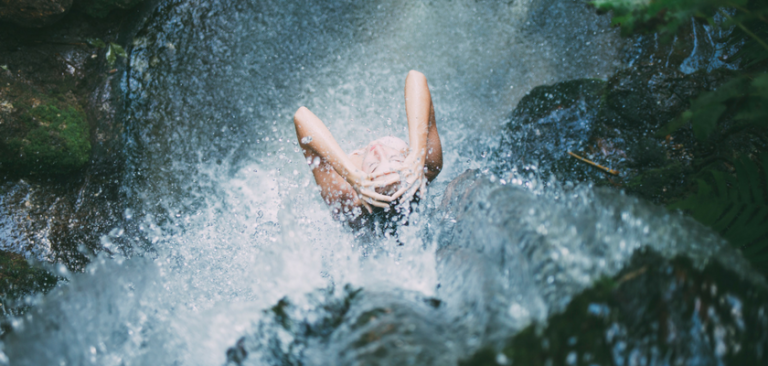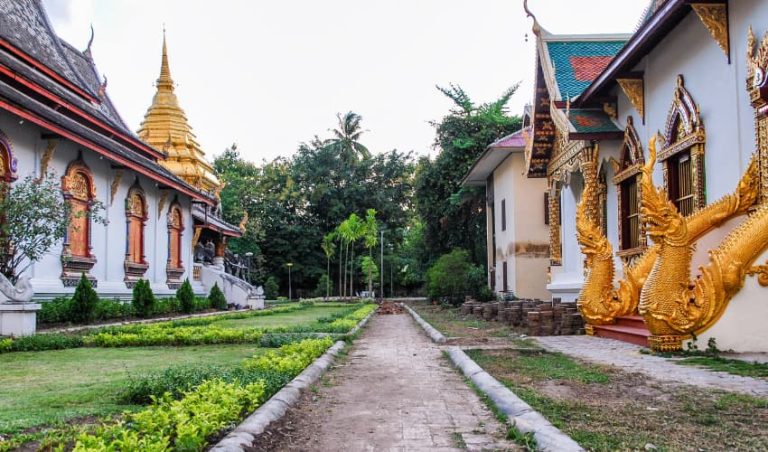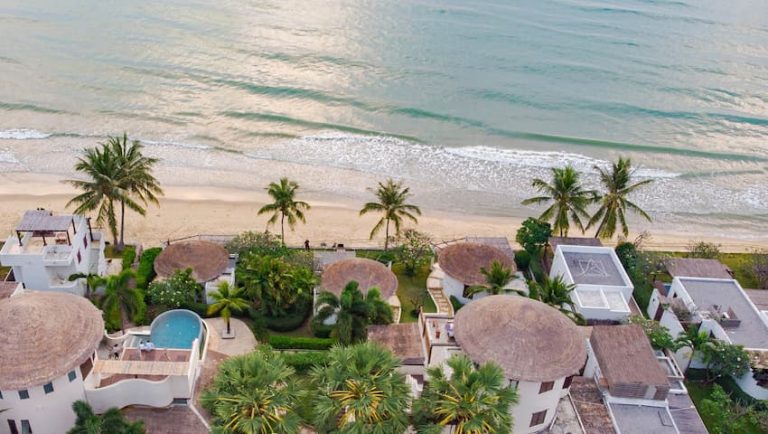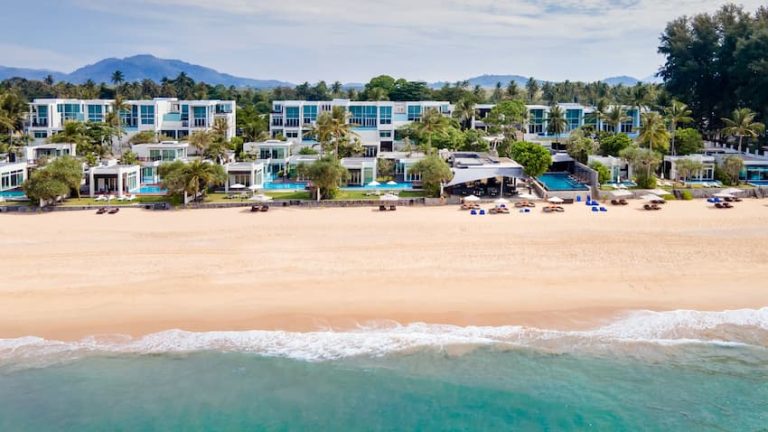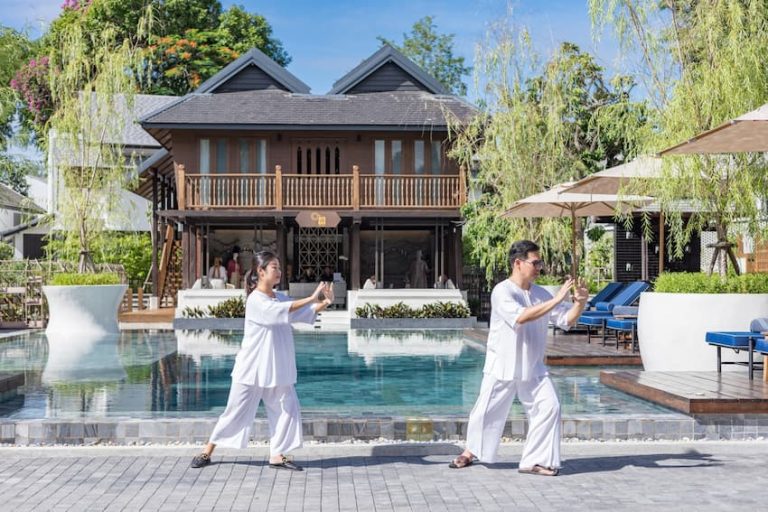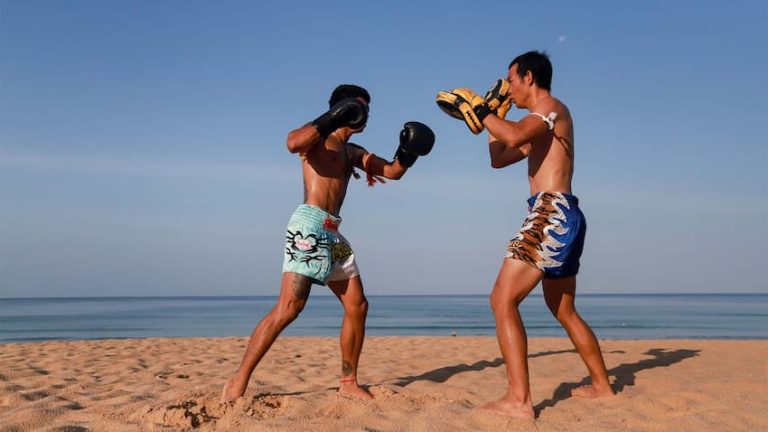Phang Nga is best-known for its limestone formations in Phang Nga Bay, which is located to the east of the southern peninsula of Thailand, and many visitors flock to the area to view this unique attraction. But there is plenty more to see. Phang Nga is a kaleidoscope of natural beauty, much of which is showcased in these natural attractions.
Natural Attractions in Phang Nga
Similan Islands
Lam Kaen, Thai Mueang District, Phang Nga
The Similan Islands are located in the Mu Ko Similan National Park, and lie about 70km off the coast of Phang Nga in the Andaman Sea. There are eleven islands in this archipelago which is spread over an area of 140 square kilometres, approximately 120km from Phuket. Each island has a name and a number from one to eleven.
The archipelago attracts many visitors who come to marvel at the rich marine life, the coral reefs, the sparkling crystal waters and the white stretches of beach. Snorkelling and scuba diving are popular activities here, and on any given day you’ll be treated to sightings of manta ray, great barracuda, leatherback turtles, and various species of shark, among many other marine species.
There are plenty of day trips to the Similan Islands, and boats depart daily from Khao Lak Pier which is located about 50km north of the Aleenta Phuket Resort. The trip takes about 70 minutes by speed boat, or a few hours by slower boats. Not all the islands allow visitors. Some are protected areas for turtles, particularly during hatching season, while others are closed for reef conservation. The Similan Islands are open to tourists between October and March.
James Bond Island (Khao Phing Kan)
Phang Nga Bay, Phang Nga
James Bond Island has become one of those iconic, must-see tourist hotspots in Thailand. It became famous as a location for the popular 1974 James Bond movie, The Man with the Golden Gun, and as Thailand became a destination for international tourists, its popularity grew.
Located in Phang Nga Bay, Khao Phing Kan consists of two islands connected by two beaches. The local name means “hills leaning against each other”, which indicates the geographical formation of the islands. There are a number of caves which are fun to explore, but these are frequently flooded so best seen at low tide.
From James Bond Island you have superb views of Khao Ta Pu, a limestone karst, or rock, which rises 20m from the water and is located to the west of the northern part of Khao Phing Kan. This karst also featured in the James Bond movie. The diameter increases the higher you go, reaching 8m at the top as opposed to 4m near the water. The shape of the rock gives it its name, which translates to “spike”.
Once on James Bond Island you can wander through the souvenir stands, sample some local treats, and explore the forested landscape. A visit is not complete without a photo opportunity and there are plenty of those on James Bond Island.
Phang Nga Bay
Phang Nga Bay lies between Phuket Island and the mainland of Southern Thailand. It encompasses an area of 400 square kilometres, and is dotted with over 40 limestone islands which highlight the natural beauty of the area. The bay is a popular destination for boating and kayaking enthusiasts, and the many features of the limestone karsts provide a stunning backdrop for these activities.
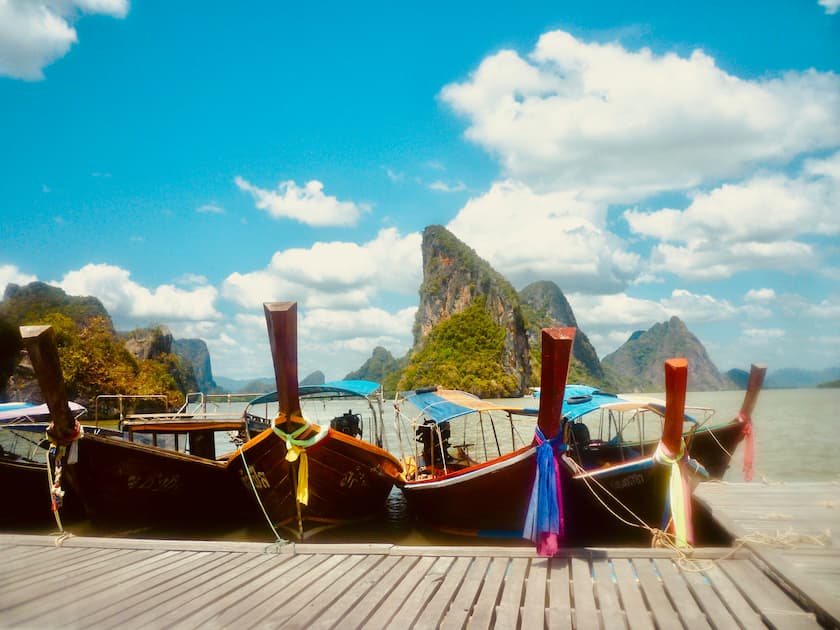
Years of sea water washing against the base of the limestone cliffs has resulted in the formation of hongs. Some islands, like Hong Island, allow access to interior chambers of some of the larger islands in the bay, where you can view the natural flora and fauna of the collapsed cave systems. Some of the hongs are only accessible at low tide.
The bay is sheltered from both the northeast and southwest monsoon seasons. This results in calm waters throughout the year which affords you views of the unique marine life and sunken caves. The islands are largely uninhabited, with just a few fishing communities living a very traditional life in the bay.
Ao Phang Nga National Park
Mueang Phang Nga District, Phang Nga
Ao Phang Nga National Park encompasses Phang Nga Bay with its remarkable limestone karsts as well as one of the largest remaining mangrove forests in Thailand. The diverse landscape has contributed to its popularity, and for years it’s been a much-visited attraction in the area.
The national park is a treasure trove of native flora and wildlife. It’s home to more than 180 bird species, including the brown-winged kingfisher, the thick-billed spiderhunter and spotted wood owl. In addition, there are seven different species of kingfisher. Birds aren’t the only wildlife in the park. You can also spot otters, monkeys and macaques among the mangroves.
The mangrove forest plays a vital role in the park’s coastal ecosystem. It acts as a storm barrier as well as being a breeding ground for marine life. The best way to explore the national park is by boat as you can cruise among the limestone formations in the bay, and through the mangrove swamps on land.
Samet Nangshe Viewpoint
Khlong Khian, Takua Thung District, Phang Nga
If its views you’re after, a visit to the Samet Nangshe Viewpoint is a must. Located about 30km east from the Aleenta Phuket Resort, the east-facing viewpoint affords panoramic views over the mangrove forest and Phang Nga Bay with its limestone islands and tranquil waters.
The viewpoint is at the top of a hill and a good 25 minute walk from the base, although there are benches along the way if you need a quick rest. You may be lucky and catch a ride with one of the pickup trucks for a small fare, but whichever way you choose to get to the summit, you won’t be disappointed once you’re there.
Ton Chong Fa Waterfall
Khao Lak-Lam Ru National Park
A popular spot to visit is the Ton Chong Fa Waterfall in the Khao Lak-Lam Ru National Park, both for its proximity to Khao Lak and the fact that it’s one of the best waterfalls in the area. You can reach the falls by scooter but the more energetic visitors will enjoy the easy one-hour hike through banana trees and jungle-like terrain to reach this natural attraction.
Water flows over five levels, some of which have small pools underneath that are perfect for cooling off on a hot day. During the rainy season the water flows more powerfully and the falls may be closed to the public. The area is popular with bird-watchers, keen for a sighting of some of the exquisite birds in the area.
Khao Lak-Lam Ru National Park
Petchkasem Road, Khuekkak, Takua Pa District, Phang Nga
Khao Lak-Lam Ru National Park was originally a coastal park. Over time it was extended and now includes some of the forested and mountainous inland regions, encompassing a total area of 150 square kilometres.
The tropical evergreen nature of the park provides a home to a diverse variety of mammals, reptiles and birds. There are a large number of waterfalls throughout the park, as well as walking trails and other more complicated guided hiking trails.
The small beach is one of the main attractions of the park, and is accessible by car. Alternatively, nature lovers will enjoy the easy one kilometre trail to reach it from the visitors’ centre. Once there, the white sand and clear waters provide a great place to relax, swim or snorkel.
Khai Islands
Andaman Sea, Ko Yao District, Phang Nga
The Khai Islands consists of three small islands, Khai Nai, Khai Nok and Khai Nui. They’re located off the east coast of Phuket in the Andaman Sea, and about 15 minutes by speedboat. There are plenty of Phuket-based tour companies offering half day or full day tours to and including the Khai archipelago.
Khai Nai and Khai Nok are the most visited of the three. These islands have picturesque sandy white beaches set out with deck chairs for relaxation. There are also a few bars selling beverages and refreshments, encouraging visitors to stay a little linger and enjoy the tropical ambiance. On the other hand, Khai Nui remains natural and rustic, with no beach or other facilities. However, it makes up for this with crystal blue waters perfect for swimming and snorkelling.
Koh Panak Island and Bat Cave
Phang Nga Bay, Takua Thung District, Phang Nga
Panak Island is another of the stunning limestone rock islands in Phang Nga Bay. Although uninhabited, the rugged scenery and incredible hongs make it a fixture on most Phang Nga Bay tours.
A hong is a lagoon-type feature that forms over hundreds of years due to erosion. It becomes accessible when waves from the sea side of the island erode the limestone creating an opening to the lagoon. Some of the cave entrances are inaccessible at high tide.
Panak Island actually has two hongs connected by a slim channel. The scenery in both is impressive with the high limestone cliffs rising up from the tranquil water and you may see waterfalls, stalactites and even mangrove trees up the walls.
There are a few notable caves on Panak Island, two of which are Mangrove Cave and Climbing Cave. The most popular of the caves is Bat Cave. This is quite a large cave with twists and turns to negotiate, and some low hanging rocks to avoid. It gets extremely dark the further in you venture, until the light from the distant hong brightens your surroundings again.
As the name suggests, Bat Cave is inhabited by hundreds of bats most of which hang silently from the roof and walls of the cave. They tend to mind their own business, so unless you disturb them, they won’t disturb you!
Khuk Khak Beach
Khuekkhak, Takua Pa District, Phang Nga
Sandwiched between Bang Niang Beach and Cape Pakarang, Khuk Khak Beach is an unspoilt 5km stretch of natural beauty. The beach is set against a backdrop of palm trees and coniferous trees that act as a sound buffer against traffic on the nearby roads, and maintains a tranquil atmosphere.
There are a couple of restaurants close to the beach, but set far enough back so as to be unnoticeable. The area maintains a traditional feel, and at times you’re more likely to see fisherman going about their daily chores than other tourists. The water is warm and clear, and shallow at low tide producing a wide stretch of beach ideal for long walks and paddling.
Natai Beach
Khok Kloi, Takua Thung District, Phang Nga
One of the hidden gems of Phang Nga is Natai Beach. The white sands of this peaceful beach stretch for 10km, and are framed by the turquoise Andaman Sea on one side and the deep coconut groves on the other.
The many protected zones around Natai Beach and strict building regulations in the area allow the beach to maintain its natural characteristics and remain unspoilt. Visitors here can expect absolute serenity, without the noise and distraction of jet skis, beach peddlers or busy cocktail bars. The only noise comes from the gentle washing of the ocean on the shore, and the wildlife in the area.
Closer to the pier, you’ll experience the hustle and bustle of the local fishermen as they set off in the morning or arrive later in the day. These sounds contribute to the rustic and natural feel of the beach.
Klong Sang Ne (Little Amazon)
Bang Nai Si Sub-district, Takua Pa District, Phang Nga
Klong Sang Ne, or Little Amazon, is a small canal about a 30-minute drive from Khao Lak. It runs from Khao Bang Tao and ends in the Takua Pa River. The plant life in the rainforest surrounding this canal is thick and diverse. Mangroves are interspersed with unique plants, and ancient banyan trees spread their thick branches to create a canopy tunnel.
A trip up the canal takes about an hour, and you can expect to see a range of wildlife including macaque monkeys, monitor lizards, mangrove snakes and reticulated pythons. It’s also a haven for birders with hornbills, kingfishers and egrets frequenting the area.
Khao Lampi-Hat Thai Mueang National Park
Thai Mueang District, Phang Nga
There two distinct sections to the Khao Lampi-Hat Thai Mueang National Park: the beach and the mountain range. The western side of the park is the Hat Thai Mueang section where you find a 13km stretch of beach with a backdrop of mangrove forest. This beach is a protected area, predominantly because between November and February Leatherback turtles gravitate to this area to nest.
The eastern side of the park has more mountainous terrain, and is a popular for its many scenic waterfalls. The largest waterfall is Ton Phrai, which is 40m high and very impressive during rainy season. You’ll also find the Lampi Waterfall that gives the park its name.
There is plenty of wildlife in the park, including civets, limas, barking deer, wild boars and porcupine. The Lampi Mountains are also home to larger mammals like tigers, bears and buffalo that tend to inhabit the deeper forested mountain areas so you’re unlikely to come across them very often.
Sa Nang Manora Forest Park
Nop Pring Sub-district, Mueang Phang Nga District, Phang Nga
Sa Nang Manora is a forest park in the Khao Thoi-Nang Hong Forest about 4km north of Phang Nga town. The park covers a small area and is hilly rather than mountainous, with evergreen trees and jungle foliage.
A 2km nature trail takes you through the forested landscape, and there are several small waterfalls with small pools offering a reprieve from the heat. Some other easy trails lead to caves with names like Bat Cave and Shell Cave. Neither of these is much more a couple of kilometres from the park’s main office and they are worth a visit if you have the energy. One or two trails are slightly harder and you would require a guide’s help to navigate these.
Surin Islands
Khura Buri District, Phang Nga
Five islands make up the Surin archipelago: Koh Surin Nuea, Koh Surin Tai, Koh Ri, Koh Khai and Koh Klang. These form part of the Mu Koh Surin National Park of which 80% is ocean.
The two main islands of Koh Surin Nuea and Koh Surin Tai are very close together and at low tide you can walk from one to the other. The coral and many species of marine life around these islands provide fantastic snorkelling opportunities, and the warm, tropical water makes swimming a pleasure.
The other three islands are smaller rocky outcrops, but also yield live coral reefs and are great for snorkelling. A highlight for divers in the area is the coral-covered Richelieu Rock, which is a partially submerged limestone rock that attracts a large number of whale shark.
The Surin Islands are home to most of the marine species in the Andaman Sea. Snorkelers and divers are truly spoilt with the underwater scenery that teems with life. Gardens of anemones, sponges and coral provide a colourful backdrop for the tropical fish and other unique marine life.
Related Articles
- Phang Nga Bay Travel Guide
- Islands in Phang Nga Bay
- Things to See and Do in Phang Nga
- Beaches in Phang Nga
- National Parks In Phang Nga Province
ALEENTA PHUKET RESORT & SPA
33 Moo 5, Khok Kloi,
Takua Thung, Phang Nga
82140 Thailand

